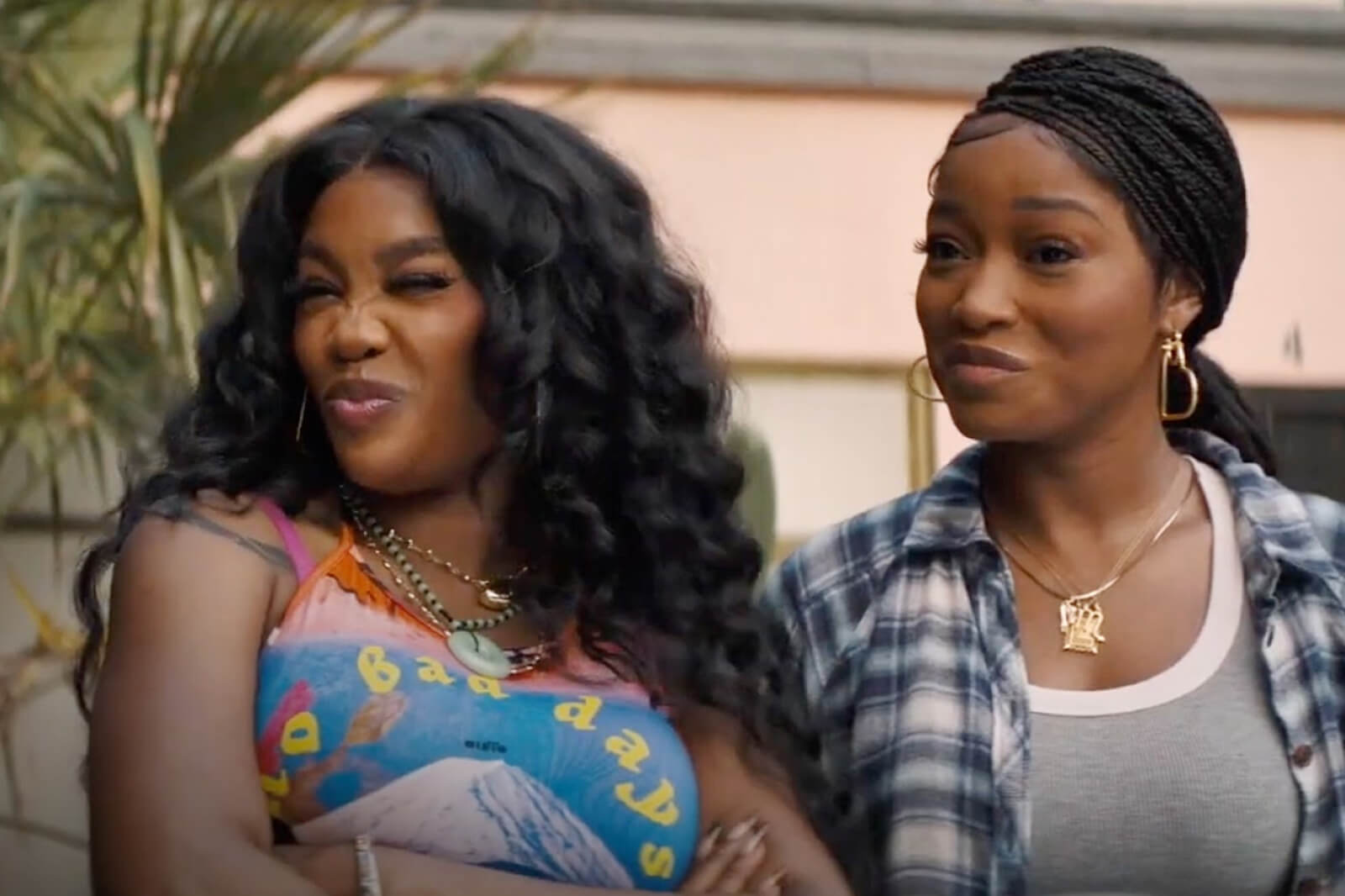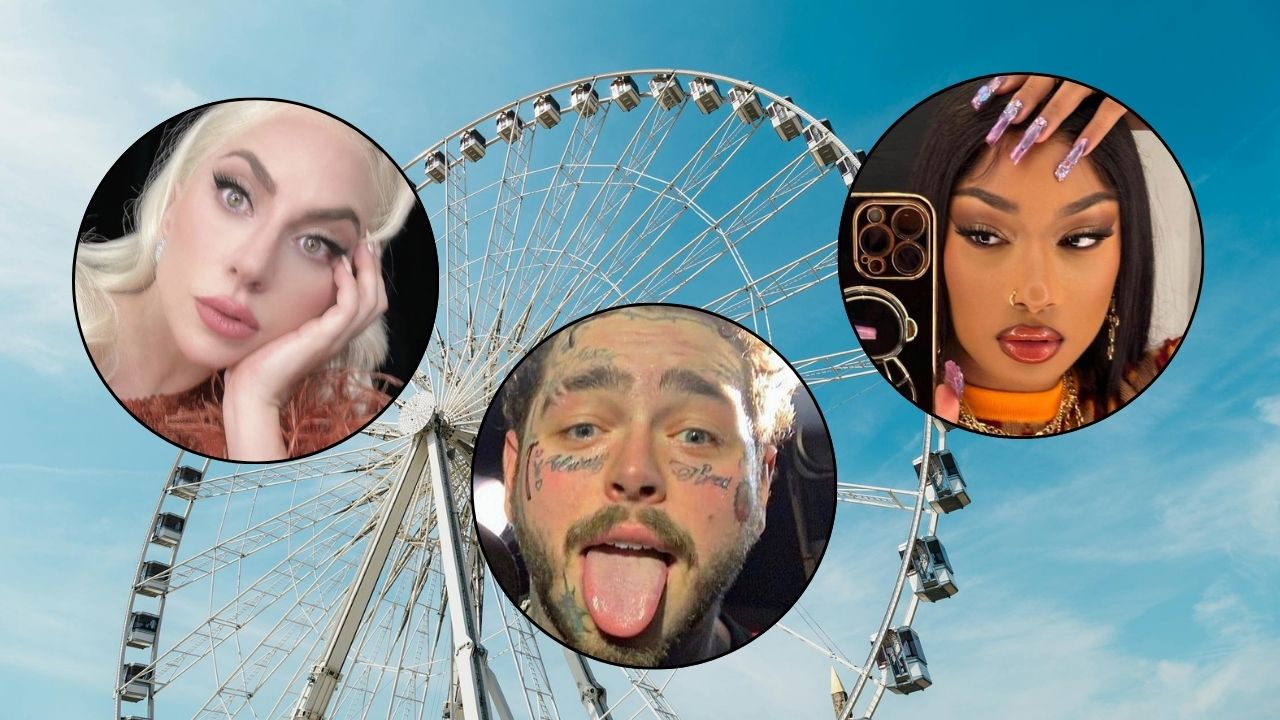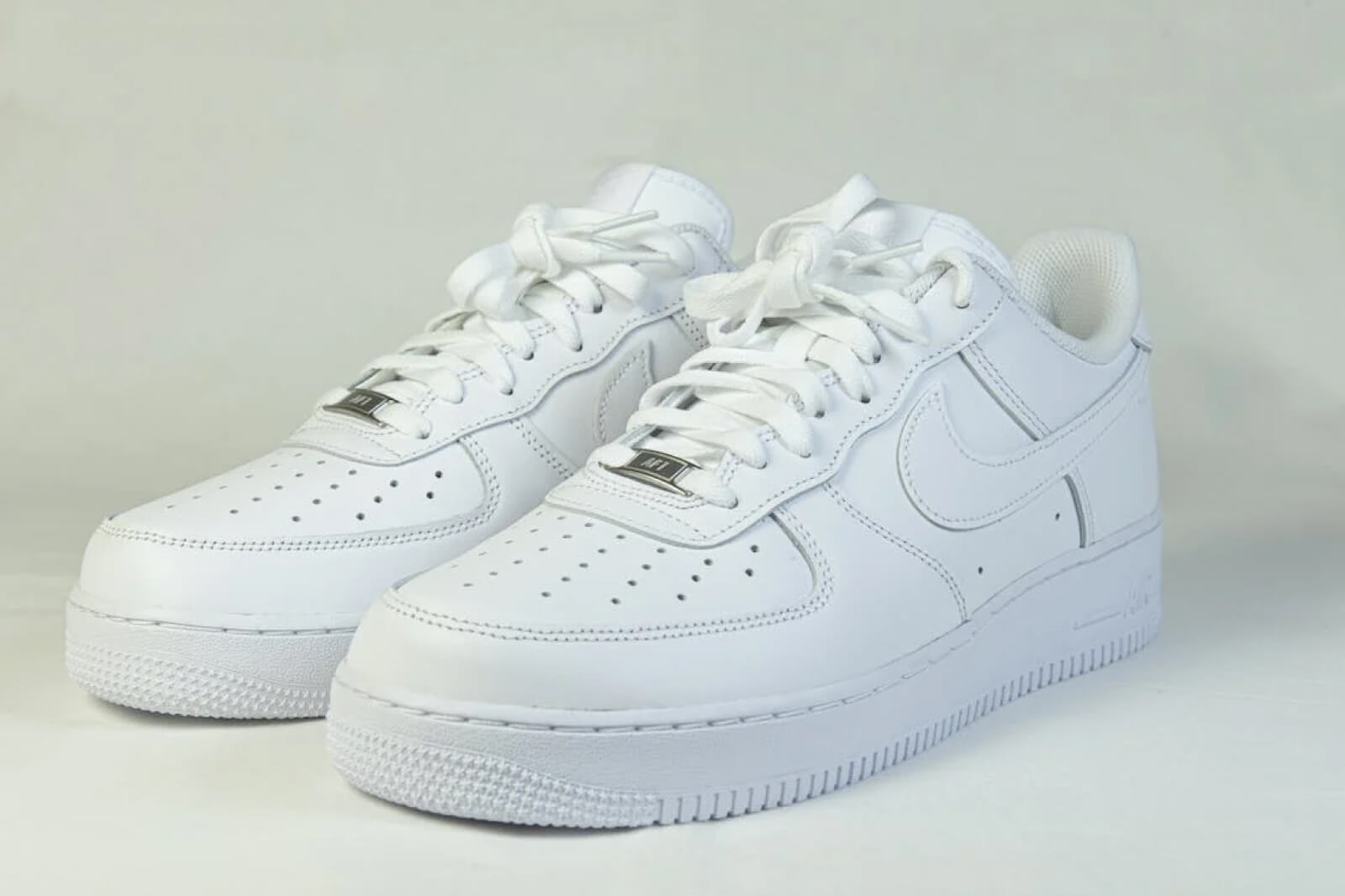
Mariah Carey participates in the ceremonial lighting of the Empire State Building to commemorate the 25th anniversary of the release of her single "All I Want For Christmas Is You", in New YorkMariah Carey Empire State Building Lighting, New York, USA
Photo by Evan Agostini/Invision/AP/Shutterstock
Hip-Hop is pop—not in sound, but rather in terms of influence and authority.
Certainly pure pop—pasteurized and whipped into its ultimate peak in the early 2010s—is still breathing, though despite its name, the genre’s reign as the chieftain of popular music has ended.
Drake and Bad Bunny are as much of pop stars in 2020 as Carly Rae Jepsen and Kesha were in 2012. Spotify reports that, at this very moment, Cardi B and Megan Thee Stallion’s “WAP” is the most-streamed song in the United States. Immediately following that is trap-pop cut “Mood,” a TikTok-famous summer bop by 24kGoldn and Iann Dior, two of many rising zoomer rappers who have embraced Hip-Hop’s guidance in most melodic forms, like trap-pop, emo rap, alternative hip-hop, and pop-rap. And if that’s not enough to give Hip-Hop a throne, Nielsen Music has confirmed that eight of the top 10 artists of 2020 so far are, of course, rappers.
But Hip-Hop’s supremacy in pop isn’t exclusive to the last couple of years. Instead, this past decade’s biggest pop smashes owe much of their success to the bars and badinage of heavyweight rappers. Katy Perry’s “Dark Horse” would be forgettable without Juicy J’s southern twang. Without A$AP Rocky, Selena Gomez’s “Good For You” would be mediocre at best. And while Ariana Grande is a powerhouse on her own, I would be remiss to downplay the influence of Mac Miller and Big Sean in the promotional push of her acclaimed debut seven years ago.
In fact, Grande’s Yours Truly made an impressive pop entrance that’s often compared to the vocal stylings of another, more distinguished musician who has masterfully operated in not only pop, but R&B and Hip-Hop for three decades now: Mariah Carey–who, in the late 1990s, demonstrated that Hip-Hop and radio pop could prosper in harmony, taking both to lofty, new heights.
Today, it’s common sense that hip-hop and pop complement each other. In the mid- and late-’90s, however, the idea of a diamond-certified pop icon like MC abandoning her calculable sonic sensibilities in favor of “urban” music was absurd, especially as Carey was listed in the adult contemporary ranks alongside Celine Dion and Whitney Houston. By 1993, just four years into her flourishing career, the songstress was prolific; with speed and skill, she delivered a string of madly successful albums, all of which spawned chart-topping singles, and all of which were the creative confections of Sony executive Tommy Mottola, who had guided Carey’s career since day one.
But suffering at the hands of Carey and Mottola’s working relationship-turned-marriage were Carey’s own artistic inclinations. Music Box was the climax of Mottola’s heavy hand in the singer-songwriter’s creative vision; it also was, and continues to be, Carey’s best-selling album ever, with over 28 million copies sold worldwide. Nevertheless, the well-performing record was a continuation of a sound that Carey wanted to stray away from: contemporary love ballads and pop-oriented numbers that leaned ever so slightly into urban inspirations without fully committing to a contemporary R&B or hip-hop identity. Sure, Music Box was powerful, as all Carey offerings were—but it wasn’t reflective of the artist or her roots.
So as the 1993 release was the conclusion of Mottola’s control over the singer-songwriter’s career, the two truly “urban contemporary” albums that followed were explosive and purely Mariah Carey. Daydream was the dénouement of the old Mimi, while Butterfly—considered to be a magnum opus by the artist herself—was a reawakening. And it was Butterfly that finally solidified Carey’s title as an R&B great and promising hip-hop collaborator rather than girl-next-door pop pedant; hence, after its drop in 1997 (which was also the year of Carey and Mottola’s separation), there was no flying back.
A lot changed for Carey in the wake of her rebirth. She finally divorced Mottola—who she alleged was emotionally abusive and increasingly controlling—and adopted the sexier public image many are familiar with today, donning teeny bikinis in music videos (re: the visual for Butterfly‘s lead single “Honey,” her first release post-divorce) and tiny, second-skin cocktail dresses on copious awards ceremony stages.
Mariah Carey – Honey (Official Video)www.youtube.com
More importantly, her sound changed. The average listener perhaps still attached the “pop singer” label to MC’s household name, but the music itself represented the nascent of a pop exodus, beginning with Daydream‘s lead single “Fantasy” and its remix with Wu-Tang’s Ol’ Dirty Bastard—a collaboration that was Carey’s first unconcealed effort to permeate hip-hop.
Mariah Carey – Fantasy (Official Music Video)www.youtube.com
And though Daydream‘s track list was still flecked with Carey’s signature balladry, best exemplified on her cover of Journey’s “Open Arms” and the old-fashioned waltz of “Forever,” such compositions seemed strategically positioned between the bumping beats of cuts like “Long Ago” and “Melt Away” (written alongside Jermaine Dupri and Babyface), or the soulful, Ripperton-esque resonance of “Underneath the Stars.” It was almost as if MC imagined Daydream as a limbo between past and present: it was traditionalist enough to appease her soon-to-be-ex-husband and most conservative listeners, but novel enough to foretell an imminent shift. And such a shift landed as Butterfly in 1997.
The album, Carey’s sixth studio record, was her first full-length work created with full artistic autonomy, and obviously so. Whereas its precedent caressed the sounds of hip-hop and soul rather clandestinely—say, “Fantasy” swaggered of straight rap, but only in the form of its non-album single remix—listeners were made aware of Butterfly‘s black musicality well before they even snapped the CD into their Walkmans. Bone Thugs-N-Harmony affiliates Krayzie Bone and Wish Bone’s name appeared smack-dab in the middle of the record’s track list, while hip-hop soul newcomers Dru Hill were granted a duet on Butterfly‘s penultimate inclusion, a cover of Prince’s “The Beautiful Ones.”
The Beautiful Ones (Feat. Dru Hill)www.youtube.com
And beyond its features, the LP revealed its heavy hip-hop influence not just loud and clear, but in advance with its lead single, “Honey.” Produced by rap heavyweights P. Diddy, Q-Tip and Stevie J, the lauded opening track dripped of a fresh sensuality, one ushered in by record scratches, ad-libs a lá The Lox’s Styles P, and MC’s own sultry contralto; the single also paid dues to old-skool hip-hop prototypes via samples of “Hey DJ” by the World’s Famous Supreme Team and “The Body Rock” by Sugar Hill’s Treacherous Three. But Butterfly wasn’t hip-hop for show. “The Roof (Back in Time)” and “Breakdown,” both now widely regarded as MC deep cuts, were hip-hop soul at its finest execution, with the former boldly sampling Mobb Deep’s “Shook Ones (Part II).”
And when the album’s production wasn’t beholden to hardcore beats or Bone Thugs steeze, it sashayed through decades of timeless rhythm and blues: “Fourth of July” blushed by like an early-1980s sex jam; Missy Elliot collab “Babydoll” sauntered with the same scratches and lowkey serenade of “Honey”; and the tender gospel of “Outside” transported listeners to church as the record flutters to a close.
Twenty-three years after the release of Butterfly, Carey is understood to be a lot of things: a pop vocal prodigy, a prima donna who refuses to let the public see the “bad” side of her face, and a chart-topper who holds the record for the most number-one singles by a solo artist, a female songwriter, and a female producer. But for longtime lovers of contemporary black music, she’s also rightfully won her title of R&B dignitary and esteemed rap collaborator.
Butterfly marked the start of MC as we know her: the soulful Songbird Supreme who’s had plentiful rap features on nearly all eight of the albums she’s recorded and written since her magnum opus dropped in 1997 (two exceptions being her second Christmas album, Merry Christmas II You, and 2009’s Memoirs of an Imperfect Angel, which, entirely co-produced by The-Dream and Christopher “Tricky” Stewart, were fundamentally hip-hop even without front-facing collaborations—and everyone knows Mimi had bars to personally chuck at Eminem on “Obsessed,” anyhow).
Yet, even as Butterfly was her foremost creative triumph, not all were as content with the album as Carey; basically, homegirl had haters. Still in conflict with Sony over her desire to dive deep into hip-hop, MC’s rap-indebted singles such as “Breakdown” and “The Roof (Back in Time)” weren’t commercially released in the U.S. and thus underperformed. And though most music critics praised her dexterous and mature approach to hip-hop and R&B’s horizons—so much that the record became one of her most critically lauded—others questioned whether her interest in rap was legitimate, or simply the result of yet another pop artist hopping on the urban genre’s effervescing bandwagon.
Mariah Carey – The Roofwww.youtube.com
Sure, the late-1990s signaled the beginning of hip-hop’s major commercialization, and of course, eventual mainstream dominance; however, when MC made hip-hop, it was the exact opposite of fronting. “[My critics] don’t understand that I’m someone who grew up with this music,” she told Newsweek upon the album’s release. And, quite frankly, it should have been expected that she had, particularly as Carey was, at the time, a twenty-something mixed black woman born and raised in ’70s and ’80s New York, the native territory of hip-hop culture.
By her critics’ flawed logic, Carey’s mega-successful pursuit of pop, rather than “street” music, could have been interpreted as equally superficial—but Butterfly was actually the artist at her most authentic self. And the truth of the matter remained: no one was forcing her to make “blacker” music, especially as Carey had been selling more records before transitioning to hip-hop and R&B. The palpable pop qualities of Music Box and Daydream prompted both albums’ diamond certifications; in contrast, Butterfly‘s street cred wasn’t strong enough to take the record past platinum.
And though the urban contemporary radio format was on the rise in the late ’90s, music was still segregated, and pure pop preserved its position as king. (Plus, let’s keep it one-hundred: Carey also had the privilege of crossing over sonic landscapes rather than being closeted in the less-prioritized urban contemporary genre, as many black artists were and still are; undeniably, she is light-skinned enough to pass as a white girl to the most oblivious of melanin-deficient folks.)
Fast-forward to Y2K, the age in which a snowballing number of pop talents (particularly young ones who had enduring careers ahead of them, e.g. Britney Spears, Justin Timberlake, and Christina Aguilera), grew increasingly smitten with the charms of contemporary R&B. And, in the same breath, bling hip-hop (the era of rap iced up in video vixens and blinding VVS visuals) spawned radio-ready flows by the likes of Nelly and Fabolous, along with suave production and shrewd sampling courtesy of brains like Timbaland and The Neptunes. Indeed, the start of the millennium was the perfect moment for pop and hip-hop to merge—but that’s something that a sage like Mariah Carey could have told everyone a half-decade before as they dialed in their local top 40 radio station to request the O.D.B. “Fantasy” remix back in 1995.
On Sept. 29, a little under two weeks from now, Carey’s highly anticipated memoir, The Meaning of Mariah Carey, will be released. Days after that (Oct. 2), she’ll drop The Rarities, a compilation album featuring unreleased recordings. For casual MC fans, the double-feature is more than enough to satiate, but for hardcore stans, surely there’s a curious and childish giddiness surrounding the delivery of both the memoir and record.
Will Mariah’s narrative explicitly remind the world of how she blazed a trail for today’s rap-inspired radio stars? Will she write that her voice was the one that risked it all, daring to strut in tandem with hip-hop before it went pop—before Fergie and Gwen Stefani, Nelly Furtado and J.Lo, or Ariana Grande, Justin Bieber, and Camilla Cabello? Perhaps. If the self-proclaimed diva chooses such a route of self-indulgence, it will be because she’s earned it.
But knowing Carey—a somewhat elusive lyricist who’s always let her music resonate louder than tabloid gossip or even her own speaking voice—she’ll choose subtlety over candor, even with the delivery of a tell-all memoir. So perhaps The Rarities, an album of enigmatic deep cuts and live recordings, will be an adequate aide-mémoire of not merely Carey’s heyday, but her hand in popular music as we know it.














